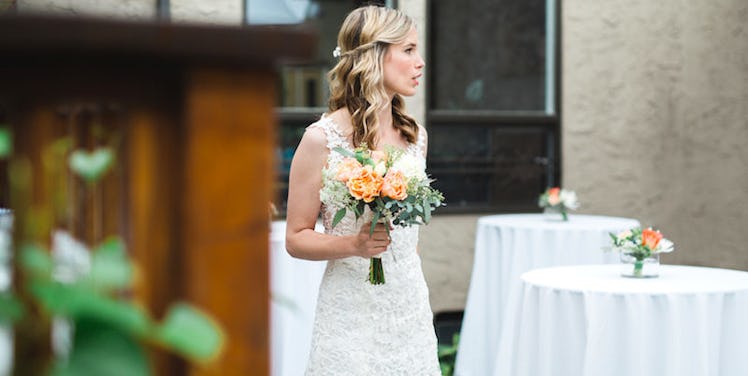
Perfectly Pale: 7 Scary Facts You Didn’t Know About Your Fake Tan
Sorry to everyone, but fake tanning -- and "normal" tanning, for that matter -- is bad for you.
It gives you cancer. It makes your skin leathery. It makes you age quicker. If you step foot in a tanning salon, you will get pregnant and die.
We know all of this, but for some bizarre reason, tanning salons are still in business.
They’re still beckoning us with their knowledgeable product placement and seemingly unbelievable deals. And on a frigid winter afternoon, who wouldn't want to curl up in a crispy bed for 10 minutes?
Even though we’re generally educated about the risks, we assume we have nothing to worry about if we just get one "base tan" before Memorial Day Weekend.
Deep down, our juvenile, image-obsessed egos are convinced having a tan and “looking healthy” are more important than actually being healthy and protecting ourselves.
But, guess what?
Cancer and premature aging aren’t the only things that should be keeping your far, far away from purposefully altering your skin color. And this isn’t just the usual spout of information coming from your mom or your high school health class.
Elite Daily talked to Dr. Jessica Weiser, a dermatologist at New York Dermatology Group, to get the lowdown on a few surprising things you might not know about fake tanning.
A tanning bed is more harmful than the actual sun.
You're not helping yourself out by driving to the tanning salon on the first 80-degree, cloudless day of the year. According to Dr. Weiser, since the bulbs in the bed "deliver variable UV dosing, the beds can actually be more detrimental."
Your "base tan" is a lie.
I specifically remember two girls in my ninth grade biology class trying to convince me a base tan was a precautionary method.
Guess what, girls-who-probably-already-have-wrinkles? That's complete BS.
Dr. Weiser says, "If anything, [a booth tan] provides patients with a false sense of protection." You think you're saving your skin by handing over 20 bucks for a half hour of baking, but you're just increasing your risk of skin cancer.
Tanning just "a couple of times" is still dangerous.
One time can't hurt, right? Wrong.
Dr. Weiser warns "even intermittent high-intensity UV carries [a] higher risk for skin cancer and certainly causes sun damage."
It's easy. Just don't do it.
You could be messing with your birth control.
And so can your cure for an afternoon headache: ibuprofen. Antibiotics, retinoids (like Accutane) and many blood pressure medications can also increase your risk of a sunburn.
Your trip to the UV bed isn’t going to clear your acne.
Yes, there are certain wavelengths Dr. Wesier says are "destructive to bacteria implicated in acne," but a tan isn't the only (or safest) way to go about getting rid of those pesky pimples.
Your eyes risk getting damaged, too.
Your skin isn't the only part that's getting baked.
Open your eyes to this one: Ocular melanoma (eye cancer), macular degeneration (leads to vision loss and blindness) and cataracts can also result from fake tanning. If you're not scared of skin cancer, then at least consider your vision for the future.
Even if you’re getting a spray tan, you have to fully protect yourself.
If you can't stand to be pale for one more second, your safest bet is to use a tanning cream or a lotion.
Spray tans don't even last that long (in my personal experience) and the FDA hasn't even officially looked into the spray application of DHA (dihydroxyacetone, the active ingredient in sunless tanning products that "reacts with amino acids in the cells on the skin surface" to briefly darken the skin).
Obviously, don't ingest or inhale when you're getting sprayed down, but Dr. Wesiser suggests wearing Vaseline on your lips, nostrils and eyelids, and keeping your groin covered!